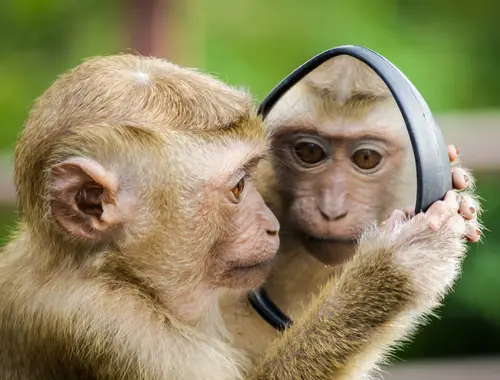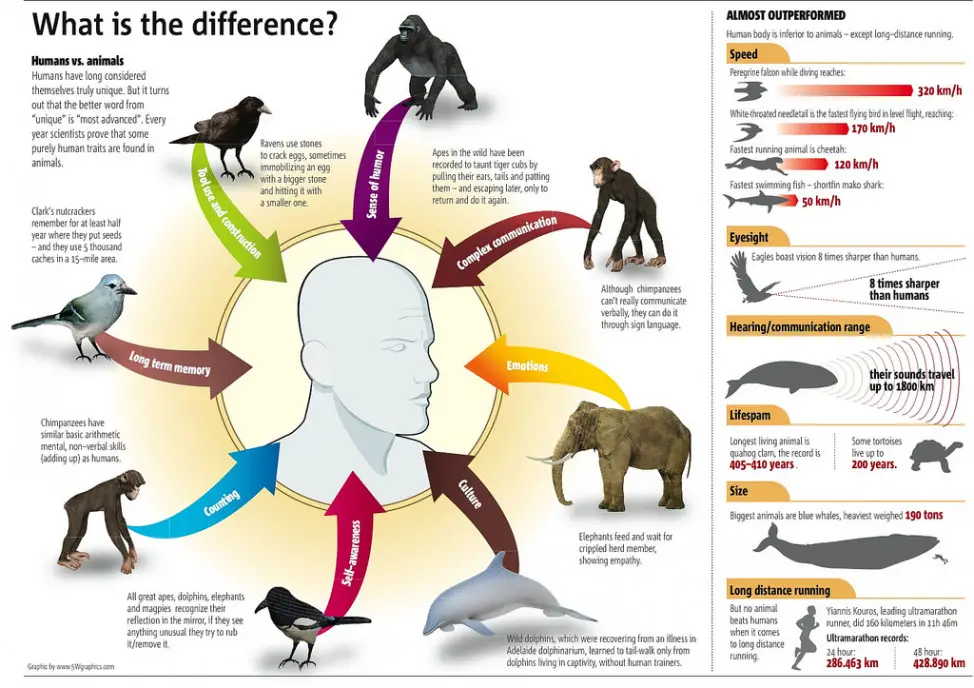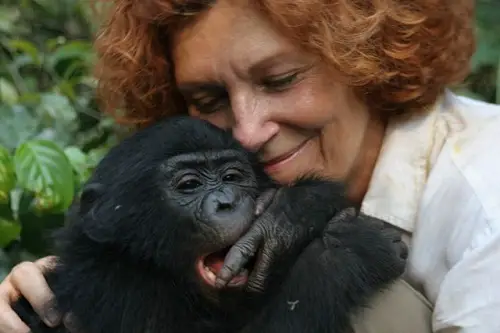
According to the literature, primates, in zoology, refers to any mammal of the group that includes lemurs, lorises, tarsiers, monkeys, apes, and humans. Primates have various physical similarities such as having a large brain in relation to their body, having forward-facing eyes, and having flat nails instead of claws or hooves. Primates are adapted for relying on their vision rather than their sense of smell, and their hands are adapted for grasping, with some (not all) having opposable thumbs. They typically have slower growth and longer lifespans than their mammal counterparts and produce fewer offspring, usually only one at a time.
However, it is the similarities in social communication and interaction between humans and primates that have attracted interest in further understanding how and why we have evolved as social beings.
In 1960, Jane Goodall started the first long-term field study on chimpanzees in the Gombe National Park (Tanzania) and continues to shed light on key questions about human evolution.

Social similarities observed between humans and primates
- Complex social groups
- Both humans and primates (apart from orangutans), live in social groups or communities. The purpose may be safety in numbers but sharing of food is a common social attribute observed between humans and primates.
- Self-recognition
- Both humans and primates have the ability to recognize themselves in a mirror. This is a trait only observed in animals that live highly socially complex lives.
- Using tools:
- Chimpanzees, our closest living relatives, use tools to fish for termites and to crack open nuts.
- Learning
- Just as humans, other primates also imitate and learn behaviours from their elders and peers.
- Language
- Humans and primates rely on gestures and sounds to transfer important information to each other.
- Memory
- Studies have shown that chimpanzees have an extraordinary memory capacity that is shared with their human counterparts.
- Morality
- Both reciprocity and empathy are found in bonobos and apes. Chimpanzees have been seen to console each other and mourn each other’s deaths.
FAQ:
What characteristics do humans share with primates?
- They have large brains (in relation to body size)
- Their vision seems to be more important than their sense of smell
- Their hands are adapted for grasping
- They have longer life spans and slower growth than other animal counterparts
- They bear few offspring, usually one at a time
- They form complex social groups and interaction
What are the similarities between humans and chimpanzees?
Physical and mental abilities that we share with chimpanzees are defined by the following behavior, according to the American Museum of Natural history:
- Playing:
- Both humans and chimpanzees play games for the purpose of leisure only. For example, playing with their offspring/ children, playing games, or swinging from a tree. It has also been observed that we even share the same competitive attitude in games or sports as chimpanzees.
- Smiling and laughing:
- Humans and chimpanzees can both smile and laugh out loud.
- Friendships:
- It has been observed that chimpanzees befriend other chimps with similar traits to them. They choose friends to help them through periods of conflict, and stress. They also have a sharing attitude regarding food, such as humans would eat together and sharing hard-earned food with their friends.
- Enjoying food and drink:
- Chimpanzees tend to take pleasure in food and drink, beyond just satisfying their hunger. Studies have shown that chimpanzees, like humans, will go through great trouble to source the best food to compile a meal. They also seem to prefer cooked food over raw food, as do we.
- Metacognition:
- The ability to reflect on one’s thoughts, is another similarity between humans and chimpanzees. Both humans and chimpanzees can make smart decisions based on what they know and don’t know, according to a study conducted by Georgia State University in 2015. They concluded that although chimpanzees have the capacity for metacognitive monitoring, this does not mean chimpanzees have the same conscious experiences humans can have when they act metacognitively, it does reflect a form of cognitive control that underlies intelligent decision-making across species.
- Morale:
- Like humans, researchers have observed that chimpanzees are able to distinguish between behaviour that is right and wrong.
What are the 7 most common primate social systems?
- Solitary primates (e.g., species that forage alone)
- Primates in pairs (permanent association between one adult male and female defines pair-living species)
- Group-living primates
- One male multi-female systems
- One female multi-male systems
- Multi-male multi-female systems
- Fision-fusion societies (e.g., ‘fision’ means split – representing primates who break into smaller groups to forage. ‘Fusion’ means bond representing primates who then come together to inhabit or sleep together in one place.)
- Multilevel societies
What are the similarities between humans and animals?
Which primates are closest to humans?
According to the American Museum of Natural History, our closest relatives are chimpanzees and bonobos, sharing 99% of our DNA. Human DNA is around 96% like our most distant primate relatives. The misconception, however, is that humans evolved from chimpanzees. However, this is not the case. Rather, chimpanzees and humans evolved from an unknown ape around 7 million years ago and then evolved in various ways. We are therefore evolved from an ape, but not one that is currently living. Chimpanzees and other primates are better put, our distant cousins, as we share similar DNA, but we are not directly evolved or related to them.












Leave a Reply